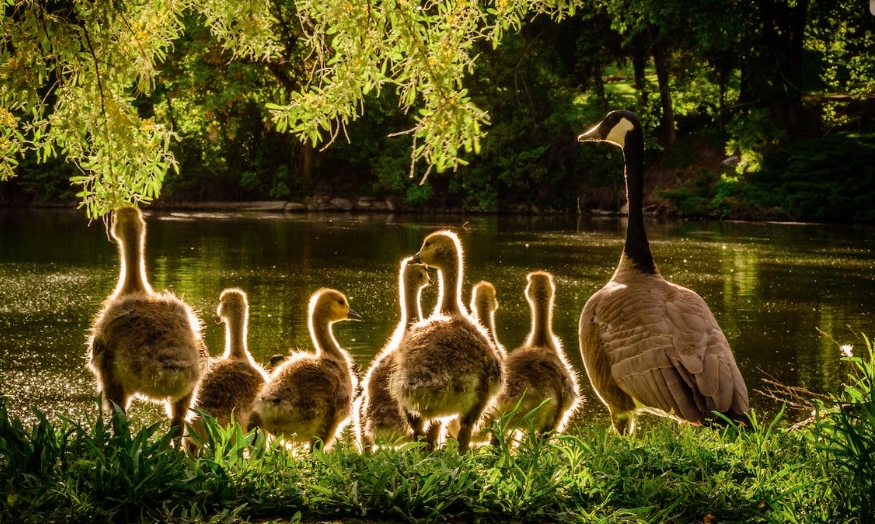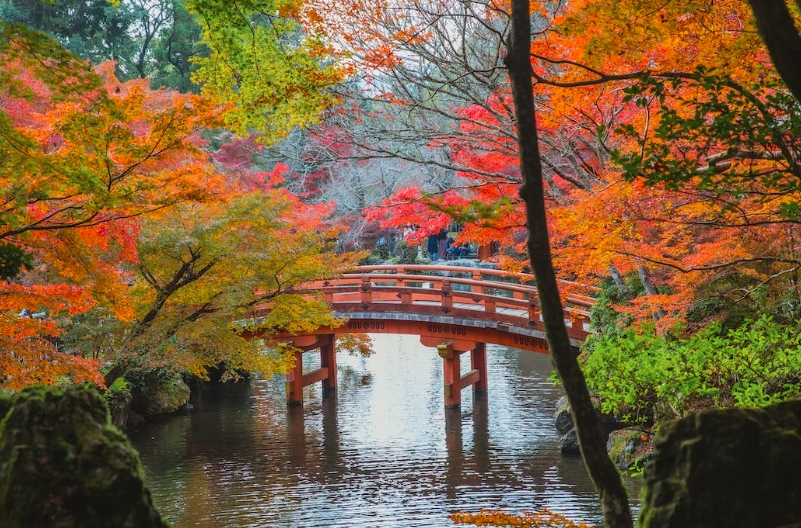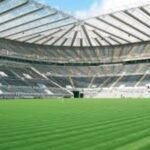Water Wonders: A Guide to Water Gardening and Pond Management is a comprehensive guide for people who are interested in the wonderful world of water gardening and pond management. Water gardening is a great way to add beauty and tranquility to your outdoor living space. It can also help to create a healthy ecosystem for wildlife and plants. The benefits of water gardening are numerous, ranging from providing a habitat for fish and aquatic plants to enhancing the appearance of your yard.
Water Wonders: A Guide to Water Gardening and Pond Management covers all the basics of water gardening and pond management, from preparing the soil to selecting the right plants and fish. It also provides helpful tips and advice on how to maintain and care for your water garden. The book covers a variety of different types of water gardens, including those that feature a pond, a bog, a waterfall, or a combination of these elements. It also discusses the various types of plants and fish that can be used to create a beautiful and healthy water garden.
Water Wonders: A Guide to Water Gardening and Pond Management is an invaluable resource for anyone who is interested in creating a beautiful and healthy water garden. It contains detailed information and practical advice that will help you create a water garden that is both aesthetically pleasing and beneficial to the local environment. Whether you are a novice or an experienced water gardener, this book will provide you with the knowledge and tips you need to create a beautiful and sustainable water garden.
Planning Your Water Garden:
Choosing the Right Location
-The location of your pond should be chosen carefully. It should be placed in an area that receives at least six hours of direct sunlight each day and is sheltered from strong winds. Make sure the site is level and far away from trees and other sources of debris. Consider the size of the garden when selecting a location, as this will determine how much space you have to work with.

Selecting the Right Pond Size
-The size of your pond will depend on the space you have available and the plants and fish you want to include. Generally, small ponds are best suited for smaller, slower-moving fish, while larger ponds can accommodate a variety of species. Consider the size of the plants you plan to use and the amount of maintenance you’re willing to do before selecting your pond size.
Designing Your Water Garden
-Once you have selected your location and size, it’s time to begin designing your water garden. Consider the shape of the pond and the type of edging you would like to use. You may also want to add a waterfall or fountain for added interest. Make sure there is adequate room for the plants and fish you plan to include.
Choosing Plants and Fish
-When selecting plants and fish, consider the climate and soil conditions in your area. Many plants require specific soil and water conditions to thrive. When selecting fish, consider the size and type of pond you have and the type of maintenance you are willing to do. Many species of fish require specific temperatures and food sources. Make sure to research thoroughly before introducing any fish or plants into your pond.
Water Garden Maintenance:
Pond Cleaning and Maintenance
Pond cleaning is an important part of maintaining a water garden. Depending on the size of the pond, the water should be completely replaced every two to four weeks. If the pond is small, the water should be completely replaced. If the pond is large, it should be partially replaced. The debris such as leaves and algae should be skimmed off the surface of the pond and the bottom should be vacuumed using a pond vacuum. A pond clarifier can also be used to break down the organic material that can cause problems in the pond.
Water Quality Management
Maintaining the quality of the water in the pond is an essential part of water garden maintenance. The pH level of the water should be tested regularly and adjusted as needed. The ammonia and nitrate levels should also be tested and monitored. The pond can be treated with beneficial bacteria to help keep the pond clean and free of algae. If the pond has fish, a high quality fish food should be used to ensure the health of the fish.
Winterizing Your Pond
When the weather starts to cool off, it’s important to winterize your pond. This includes removing any debris from the pond, such as leaves and dead plants, as well as draining some of the water from the pond. This will help reduce the amount of ice that forms on the surface of the pond. It’s also important to make sure the pump and other equipment is turned off and covered. This will help protect the equipment from the cold weather.
Popular Water Features:
Pond Cleaning and Maintenance
Pond cleaning is an important part of maintaining a water garden. Depending on the size of the pond, the water should be completely replaced every two to four weeks. If the pond is small, the water should be completely replaced. If the pond is large, it should be partially replaced. The debris such as leaves and algae should be skimmed off the surface of the pond and the bottom should be vacuumed using a pond vacuum. A pond clarifier can also be used to break down the organic material that can cause problems in the pond.
Water Quality Management
Maintaining the quality of the water in the pond is an essential part of water garden maintenance. The pH level of the water should be tested regularly and adjusted as needed. The ammonia and nitrate levels should also be tested and monitored. The pond can be treated with beneficial bacteria to help keep the pond clean and free of algae. If the pond has fish, a high quality fish food should be used to ensure the health of the fish.
Winterizing Your Pond
When the weather starts to cool off, it’s important to winterize your pond. This includes removing any debris from the pond, such as leaves and dead plants, as well as draining some of the water from the pond. This will help reduce the amount of ice that forms on the surface of the pond. It’s also important to make sure the pump and other equipment is turned off and covered. This will help protect the equipment from the cold weather.
Advanced Water Features:
Koi Ponds
Koi ponds are popular water features for gardens and backyards due to their distinct beauty and tranquil atmosphere. They require careful maintenance and regular cleaning, but once established, they can be a very rewarding part of the landscape. Building a koi pond usually starts with the excavation of a hole that is either lined with a pond liner, or lined with concrete and waterproofed with a sealant. Once the pond is built, a filter system and pump are installed to keep the water clean and filtered, and a skimmer box is installed to remove floating debris. The water is then brought to the correct temperature and pH level using a heater and water conditioner. Finally, the koi and other aquatic plants can be added to the pond, and the pond can be enjoyed for years to come.
Natural Swimming Pools
Natural swimming pools are becoming increasingly popular due to their low maintenance and chemical-free nature. Unlike traditional chlorinated swimming pools, natural pools use a combination of plants and bacteria to filter and clean the water, creating a natural ecosystem. The pool is usually constructed with a preformed liner and a large skimmer box that filters debris. The water is then pumped through a biological filter and then returned to the pool. The plants and bacteria in the filter act together to naturally clean the water, creating a chemical-free pool that is safe to swim in.
Aquaponics
Aquaponics is a unique form of aquaculture that combines fish farming with hydroponic vegetable production. In an aquaponic system, the fish waste is used to fertilize the hydroponic plants, and the plants, in turn, filter the water for the fish. The two components of the system work together to create an efficient, self-sustaining cycle. Aquaponics systems are typically constructed with a tank to house the fish, a grow bed for the plants, and a sump tank to store the excess water. The water is then pumped through the system, with the fish waste being used as fertilizer for the plants, and the plants acting as a filter for the water. The resulting water is then returned to the tank, and the cycle continues.
Troubleshooting:
Troubleshooting Common Water Garden Issues
Water gardens are a great way to add beauty and tranquility to any outdoor space. Unfortunately, these gardens are not without their problems. Common water garden issues include algae growth, water clarity, water temperature, and plant health. Knowing how to troubleshoot these issues can help ensure a successful garden.
Algae Growth:
Algae growth is a common issue in water gardens, as algae blooms can take over water surfaces and block out light to other aquatic life. To troubleshoot this issue, check your garden for any sources of excess nutrients or organic matter that can feed the algae. Make sure to keep your garden free of debris, and use a water pump or water fountain to keep the water circulating. Additionally, adding floating plants like water lettuce can help reduce the amount of algae in your garden.

Water Clarity:
Water clarity is an important factor for a healthy water garden, as murky water can block out light and inhibit the growth of aquatic life. One way to troubleshoot this issue is to check for any sources of sediment or dirt in the water. To keep the water clean, you should change the water regularly, and use a filter to remove dirt and other particles from the water. Additionally, adding submerged plants like elodea or anacharis can help filter out the water and keep it clear.
Water Temperature:
Water temperature is key for a successful water garden, as many aquatic species prefer specific water temperatures. To ensure that your water is at the right temperature, you should monitor it regularly using a thermometer. If the temperature is too low, you can use a water heater to bring it up. Additionally, you should make sure to keep the water in your garden shaded, as direct sunlight can cause the temperature to rise too high.
Plant Health:
The health of the plants in your water garden is essential for a successful garden. To troubleshoot any issues with your plants, check for signs of disease or stress. Make sure to use a balanced fertilizer according to the manufacturer’s instructions, and plant your aquatic plants in soil or gravel to promote healthy root growth. Additionally, you should check the pH levels of your garden regularly to ensure that it is within the optimal range for your plants.
Conclusion
Water Wonders: A Guide to Water Gardening and Pond Management is a comprehensive and informative guide to the world of water gardening and pond management. It provides readers with an in-depth look at the history, science, and art of water gardening and pond management. From the basics of water garden design and construction to maintenance, this book covers all aspects of this interesting and rewarding hobby. Not only does it provide clear instructions on how to create and maintain a water garden, it also provides helpful tips and tricks for keeping it looking beautiful and healthy.
Overall, Water Wonders: A Guide to Water Gardening and Pond Management is an excellent resource for anyone interested in learning more about the fascinating world of water gardening. With its comprehensive and easy-to-follow instructions, this book is the perfect guide for both beginners and experts alike. Not only will readers gain a better understanding of how to create and maintain a water garden, but they will also be able to appreciate the beauty and complexity of this hobby. Water Wonders: A Guide to Water Gardening and Pond Management is an invaluable resource for anyone interested in exploring the wonderful world of water gardening.
FAQs
1. What is water gardening and pond management?
Water gardening and pond management is the process of creating and maintaining a garden pond or water feature in order to create a unique and beautiful landscape. It includes selecting and designing the water feature, installing and maintaining pumps and filters, selecting and caring for plants and fish, as well as maintaining the overall health of the pond.
2. What are the benefits of water gardening and pond management?
Water gardening and pond management offers many benefits, including improved aesthetics, increased wildlife, and improved water quality in the pond. Additionally, it can be a relaxing and enjoyable hobby for those interested in gardening and aquatic life.
3. What are the common types of water features?
Common types of water features include garden ponds, waterfalls, streams, and fountains. The type of water feature you choose will depend on your budget, size of your yard, and the look you are going for.
4. What type of plants are best for water gardening and pond management?
There are many types of plants that can be used in a water garden or pond, including water lilies, lotus, irises, and rushes. Additionally, floating plants such as duckweed and water hyacinth can be used to provide cover for fish and other aquatic life.
5. What type of fish can be kept in a pond?
Popular fish that can be kept in a pond include goldfish, koi, and minnows. Additionally, some tropical fish such as angelfish and guppies can also be kept in a pond.
6. What type of filtration system is needed for a pond?
The type of filtration system needed for a pond will depend on the size of the pond and the types of fish and plants that are being kept. A biological filter is generally recommended for ponds with fish and plants.
7. What type of maintenance is required for a pond?
Regular maintenance of a pond is necessary in order to keep the water clean and healthy. This includes testing the water quality, cleaning the filter, and removing any debris or dead plants. Additionally, the pond should be checked regularly for signs of disease or parasites.
8. How often should a pond be cleaned?
The frequency of cleaning a pond will depend on the size of the pond and the types of fish and plants that are being kept. Generally, a pond should be cleaned at least once a month or as needed.
9. What type of chemicals should be used in a pond?
The type of chemicals used in a pond should be determined by the type of pond and the type of fish and plants that are being kept. Generally, chemicals such as chlorine and algaecides should not be used in a pond that contains fish or plants.
10. How can I keep my pond healthy?
Maintaining a healthy pond requires regular maintenance, including testing the water quality, cleaning the filter, and removing any debris or dead plants. Additionally, it is important to keep the pond free of pollutants, such as lawn chemicals and pet waste.


















